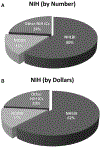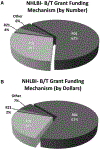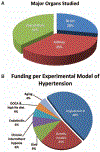Investing in high blood pressure research: a national institutes of health perspective
- PMID: 23438933
- PMCID: PMC6711194
- DOI: 10.1161/HYPERTENSIONAHA.111.00770
Investing in high blood pressure research: a national institutes of health perspective
Figures




References
-
- Chobanian AV, Bakris GL, Black HR, Cushman WC, Green LA, Izzo JL Jr, Jones DW, Materson BJ, Oparil S, Wright JT Jr, Roccella EJ; Joint National Committee on Prevention, Detection, Evaluation, and Treatment of High Blood Pressure. National Heart, Lung, and Blood Institute; National High Blood Pressure Education Program Coordinating Committee. Seventh report of the Joint National Committee on prevention, detection, evaluation, and treatment of high blood pressure. Hypertension. 2003;42:1206–1252. - PubMed
-
- Sug Yoon S, Burt V. Hypertension among adults in the United States, 2009–2010, 2012; http://www.cdc.gov/nchs/data/databriefs/db107.pdf. - PubMed
-
- The National Institutes of Health (NIH) home page. www.nih.gov.
-
- Glasser SP, Judd S, Basile J, Lackland D, Halanych J, Cushman M, Prineas R, Howard V, Howard G. Prehypertension, racial prevalence and its association with risk factors: Analysis of the REasons for Geographic And Racial Differences in Stroke (REGARDS) study. Am J Hypertens. 2011;24:194–199. - PMC - PubMed
Publication types
MeSH terms
Grants and funding
LinkOut - more resources
Full Text Sources
Other Literature Sources
Medical

